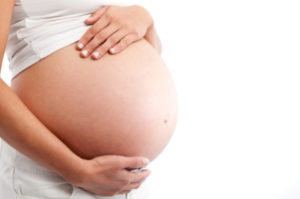 There is growing evidence that women around a lot of endocrine disrupting chemicals at home or in jobs such as cleaners, hairdressers and laboratory workers during pregnancy are more likely to have baby boys with a genital defect called hypospadias (a condition where the opening of the urethra is on the underside of the penis rather than at the tip). From Environmental Health News:
There is growing evidence that women around a lot of endocrine disrupting chemicals at home or in jobs such as cleaners, hairdressers and laboratory workers during pregnancy are more likely to have baby boys with a genital defect called hypospadias (a condition where the opening of the urethra is on the underside of the penis rather than at the tip). From Environmental Health News:
Genital defect in baby boys linked to moms’ chemical exposure
Mothers around a lot of endocrine disrupting chemicals at home or in jobs such as cleaners, hairdressers and laboratory workers during pregnancy are more likely to have baby boys with a genital defect, according to a new study in the south of France.The study adds to mounting evidence that fetal exposure to chemicals that mimic people’s natural hormones may cause hypospadias, a condition where the opening of the urethra is on the underside of the penis rather than at the tip.
French researchers examined more than 600 children in the south of France and found that babies exposed to endocrine disrupting chemicals while their genitals were developing were more likely to suffer from hypospadias. Half the boys had hypospadias and half did not. The risk for those exposed was 68 percent higher than the unexposed boys. The researchers ruled out baby boys with known genetic risks for such defects.
The defect, which can be minor or quite severe depending on how far the opening is from the tip, can lead to problems with urination and, later in life, sexual difficulty....It is one of the most common genital defects in baby boys, and most cases require surgery, often done before they reach two years old. In the United States, an estimated five out of 1,000 boys are born annually with hypospadias, while Europe’s rate is slightly less than two out of 1,000.
The researchers estimated the unborn babies’ exposure by looking at their parents’ jobs and where they lived. Working with hormone disrupting chemicals and living in homes near heavy polluters were both linked to more baby boys having the defect. However, the researchers did say a limit of the study was attempting to estimate fetal exposure to such chemicals.Mothers were most likely to have boys with hypospadias if they worked as a cleaner, hairdresser or beautician.
Some of the endocrine disrupting chemicals linked to the professions involved in the study were bisphenol-A (BPA), phthalates, polychlorinated compounds, alkylphenolic compounds and organic solvents. Most exposures—78 percent—occurred in the window of development when babies’ genitals are forming.... but detergents, pesticides, and cosmetics accounted for 75 percent of the cases,” the authors wrote in the study published in the European Urology journal this month.
Other possible causes of the birth defect include older, obese mothers, and fertility or hormone treatments during pregnancy, according to the U.S. Centers for Disease Control and Prevention.
This wasn’t the first time scientists have found a link between certain chemicals and hypospadias. Mothers in southeast England who were heavily exposed to endocrine disrupting phthalates on the job were about three times as likely to have a baby boy with hypospadias. Phthalates are used in some cosmetics, fragrances, food packaging and PVC plastics.
